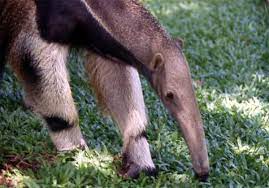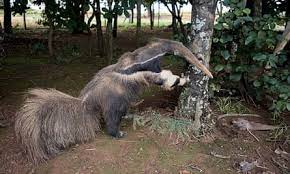The short-nosed anteater, scientifically known as Tamandua tetradactyla, is a captivating mammal that inhabits the diverse ecosystems of Central and South America. With its distinctive appearance and unique behaviors, this small anteater has captured the interest of researchers and nature enthusiasts alike. Join us as we embark on a journey to uncover 22 intriguing facts about the short-nosed anteater, shedding light on its remarkable characteristics and its role within its natural habitat.

1. Unique Anatomy: The short-nosed anteater gets its name from its stubby snout, which sets it apart from its long-snouted relatives.
2. Nocturnal Habits: These anteaters are primarily nocturnal, venturing out under the cover of darkness to hunt for their favorite prey: ants and termites.
3. Insectivorous Diet: Their diet is specialized, comprising nearly entirely of ants and termites, which they extract using their long, sticky tongue.
4. Nimble Climbers: Equipped with strong limbs and sharp claws, short-nosed anteaters are adept at climbing trees and navigating dense vegetation.
5. Arboreal Lifestyle: These mammals spend much of their lives in trees, where they find both shelter and food.
6. Protective Behavior: When threatened, short-nosed anteaters use their sharp claws and strong tail to defend themselves.
7. Communication: These anteaters communicate through vocalizations and scent marking, which play a role in social interactions.
8. Social Creatures: While usually solitary, short-nosed anteaters do occasionally come together for social interactions, particularly during mating season.
9. Longevity: In the wild, short-nosed anteaters can live up to 9-10 years, adapting to their diverse habitats.
10. Ecosystem Engineers: By feeding on ants and termites, short-nosed anteaters contribute to controlling insect populations in their habitats.
11. Hairless Tail: Their prehensile tail is hairless and helps provide balance as they move through trees and search for food.
12. Habitat Diversity: Short-nosed anteaters can be found in various habitats, including rainforests, grasslands, and savannas.
13. Reproductive Behavior: Short-nosed anteaters have a unique reproductive strategy involving delayed implantation, allowing them to time births with optimal conditions.
14. Parenting Responsibilities: After birth, the female carries her young on her back, providing protection and warmth.
15. Human Interaction: Habitat loss and deforestation pose significant threats to short-nosed anteater populations.
16. Conservation Efforts: Efforts are being made to protect the habitats of these anteaters and raise awareness about their importance.
17. Bipedal Movement: Short-nosed anteaters can walk on their hind legs when searching for food, using their forelimbs for balance.
18. Conservation Status: These anteaters are currently listed as a species of “Least Concern” by the IUCN, although local populations may face more threats.
19. Endangered Prey: The reliance of short-nosed anteaters on ant and termite populations can make them vulnerable to changes in these insect communities.
20. Ecological Role: These anteaters contribute to soil aeration and nutrient recycling through their feeding behaviors.
21. Natural Pest Control: By feeding on ants and termites, they indirectly benefit agriculture by helping control pest populations.
22. Biodiversity Indicators: The health of short-nosed anteater populations can reflect the overall health of their ecosystems.
Conclusion
The short-nosed anteater, with its distinctive appearance and ecological significance, stands as a testament to the intricate connections between species and their environments. As we explore these 22 fascinating insights, we gain a deeper appreciation for the role these remarkable mammals play in maintaining the balance of their diverse ecosystems.



















Add Comment